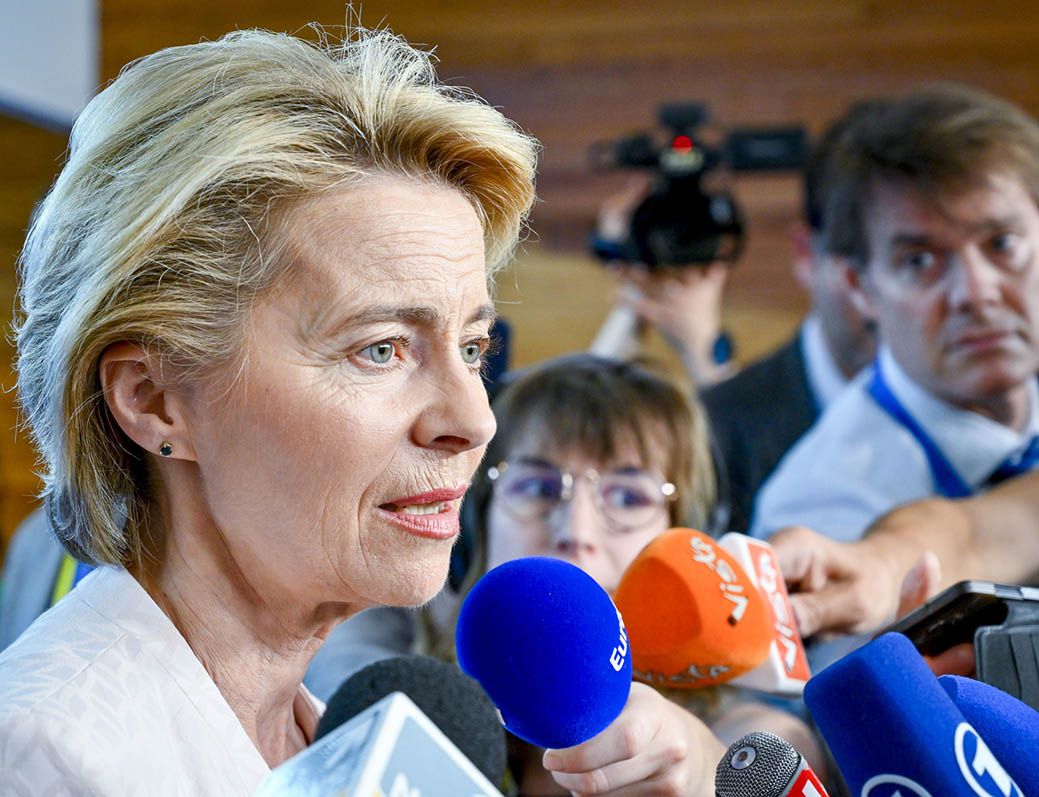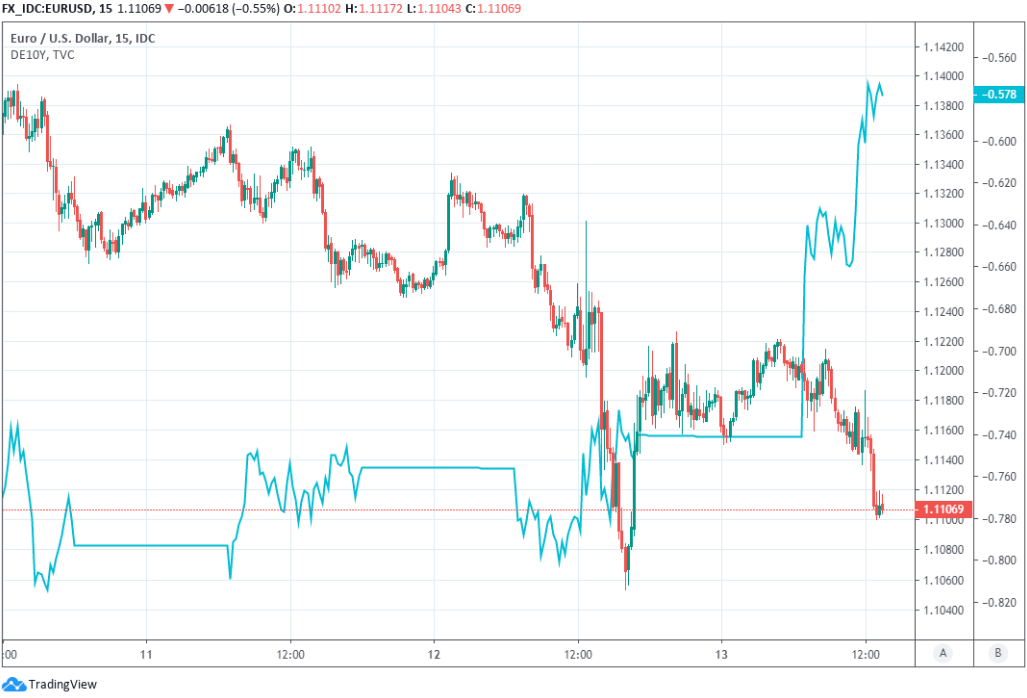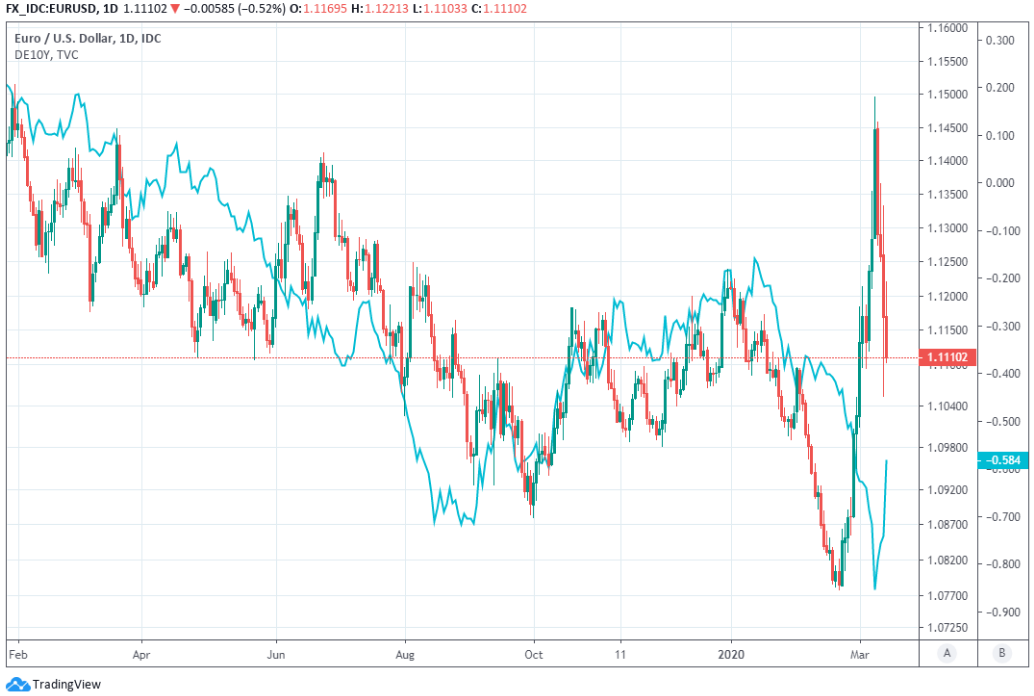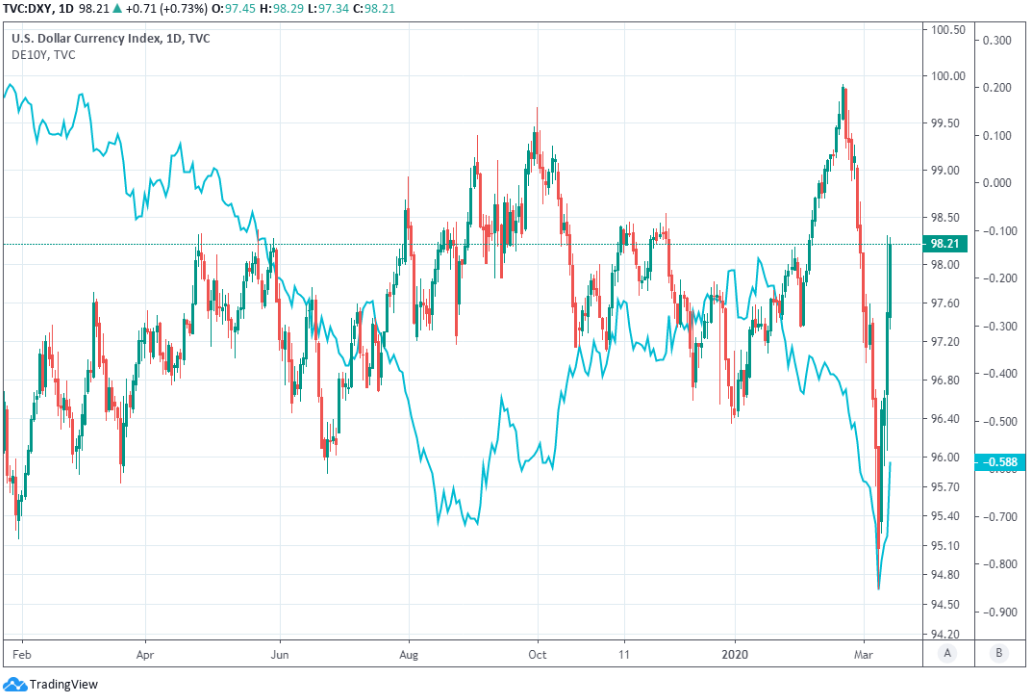The Euro-to-Dollar Rate Is a "1.15+ Story" on Fed’s QE4, Says ING
- Written by: James Skinner
-EUR bleeds as EU Commission gives virus response.
-But price action comes amid ongoing strength in USD.
-And EUR is a 1.15 story on Fed QE program says ING.
-As others say QE4 was already announced Thursday.
-MUFG says Fed change to bill purchase plan is “QE4”.
-Says QE4 will restrain and eventually weaken the USD.

Image © European Union 2018 - European Parliament, Reproduced Under CC Licensing.
- EUR/USD Spot rate: 1.1105,down -0.61% today
- Indicative bank rates for transfers: 1.0757-1.0835
- Transfer specialist indicative rates: 1.0980-1.1047 >> Find Out More About This Rate
The Euro-to-Dollar rate was bleeding lower as the European Commission set out its coronavirus response package Friday but strategists at ING say the exchange rate will be a “1.15+” story if the Federal Reserve (Fed) launches a new quantitative easing program, and others say “QE4” is already here.
Europe’s single currency weakened further on Friday as the European Commission announced an eagerly-awaited response to the coronavirus pandemic that’s rapidly turning Europe into a Western Wuhan. The Commission has said it will spend €37bn to support member states and their businesses Friday, a meagre amount when stood next to the sums coughed up by some individual countries, although the Euro was inspired by other measures announced by Commission President Ursula von der Leyen.
The Commission is to grant sweeping exemptions from its state aid rules to support efforts aimed at containing the virus and will also relax ‘stability and growth pact’ terms of the treaties, which have foisted mandatory and often unwanted austerity on countless countries since the debt crisis. State aid rules forbid assistance to companies on non-commercial terms, which frequently precludes it for those who're in most need but least able to find it privately.
This comes amid similarly supportive moves in Germany and in the wake of a European Central Bank (ECB) stimulus package that was found wanting by the market, although the overall European government response has been fragmented and underwhelming.
The Euro-to-Dollar rate was -0.61% lower at 1.1105 Friday, with losses stepping up since the Commission announced its response package although price action did come against a backdrop of ongoing dollar strength. Many say Dollar strength is connected to a lack of liquidity in the market, but a second Fed offering of $500 bn to banks was underscribed again Friday, with just $24.1 bn in funding taken out a day after only $74.8 bn out of $500 bn was taken up.
Above: Euro-to-Dollar rate shown at 15-minute interals alongside 10-year German bond yield.
"The fact that the Fed was called in for these emergency measures will add weight to the view that the Fed will cut rates by 100bp next Wednesday and take no chances by announcing a new, large scale QE programme,” says Chris Turner, global head of markets and regional head of research for UK and CEE at ING. “BTP-Bund spreads widened 60bp and added to pressure on a EUR/USD already falling on the USD funding squeeze. If the Fed comes in with a massive QE programme, EUR/USD is a 1.15+ story. But until then support at 1.1000/1050 is vulnerable until the USD funding story is sorted out.”
Currency markets have endured extreme volatility ahead of the weekend and trading in the Euro-to-Dollar has been no different although conditions were calmer on Friday, as stock markets and other risk assets recovered sharply from their worst sell-off in decades after the Federal Reserve stepped into the fray in an apparent but effective attempt to catch a falling knife.
The Fed put an eye-watering $500bn of liquidity on the table for commercial banks Thursday in an effort to calm markets, although it also did more than just provide liquidity. The bank extended an earlier March 13 offer to buy three-month treasury bills so that it includes bonds from across the yield curve, which will force down bond yields even further and provide strong reassurance to investors following the bloodiest trading session since Black Monday of 1987.
Above: Euro-to-Dollar rate at daily intervals. Correlation with 10-yr German bond yield goes into reverse from February.
"We have had a suspicion that we would see a more proactive Federal Reserve than what we witnessed in the period following the collapse of Lehman Brothers in 2008 and we are certainly seeing signs of that now," says Derek Halpenny, head of research, global markets EMEA and international securities at MUFG. "This is essentially confirmation from the Fed of an effective re-start of Quantitative Easing. That makes this QE4!"
The March 13 offer is scheduled to expire on April 13 and allowing it do so would amount to a withdrawal of ‘accommodation’ from markets that are facing an unprecedented crisis where a deadly and highly contagious virus has met with a modern and globalised economy that is addicted to an increasing velocity of money, trade and activity. In other words; allowing the $60bn offer to expire that month could be damaging and some say the Fed won’t do that.
Crucially, the only alternative to ending the $60bn offer as the sun sets on its first month is to allow it to continue, and some are calling that exactly the kind of “quantitative easing” that ING says might lift the Euro-to-Dollar rate to 1.15 and above over the coming months. The Dollar was brutalised last week when the Fed cut interest rates 50 basis points to 1.25%, obliterating the yield advantage over other currencies, and QE4 will reduce U.S. yields even further still.
“We believe these actions will greatly diminish the prospect of dollar gains and general volatility like we saw yesterday. The Fed USD swap lines also remain in place to provide USD liquidity to a key group of central banks globally. The dollar is unlikely to depreciate any time soon but yesterday’s Fed announcements will help limit the scale of the moves. Once risk aversion eases to a degree, we view the dollar as very vulnerable to a period of depreciation,” Halpenny says.
Above: Dollar Index at daily intervals. Correlation with 10-yr German bond yield goes into reverse from February.







